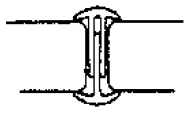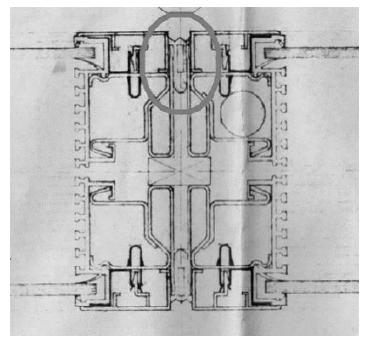Lizzanno Partitions (Uk) Ltd v Interiors Manufacturing Ltd
| Jurisdiction | England & Wales |
| Judge | His Honour Judge Birss,Judge Birss |
| Judgment Date | 11 April 2013 |
| Neutral Citation | [2013] EWPCC 12 |
| Docket Number | Case No: CC11P01049 |
| Court | Patents County Court |
| Date | 11 April 2013 |
[2013] EWPCC 12
IN THE PATENTS COUNTY COURT
Rolls Building
7 Rolls Buildings
Fetter Lane
London EC4A 1NL
His Honour Judge Birss QC
Case No: CC11P01049
Barbara Cookson of Filemot Technology Law Ltd for the Claimant
Isabel Jamal (instructed by Fry Heath & Spence LLP) for the Defendant
Hearing dates: 12th February 2013
Approved Judgment
I direct that pursuant to CPR PD 39A para 6.1 no official shorthand note shall be taken of this Judgment and that copies of this version as handed down may be treated as authentic.
His Honour Judge Birss QC
| Topic | Paragraphs |
| Introduction | 1 |
| Background | 4 |
| The issues | 10 |
| The witnesses | 13 |
| The person skilled in the art | 17 |
| Common general knowledge | 18 |
| The patent | 25 |
| The claims and construction | 34 |
| Infringement | 62 |
| Added matter | 82 |
| Novelty | 90 |
| Obviousness | 100 |
| Insufficiency | 112 |
| Conclusion | 135 |
Introduction
This action relates to United Kingdom patent GB 2 432 617 entitled "A gasket". The application for the patent was filed on 22 nd November 2005. The inventor was Mr Terrence Bradley. The patent was granted to Komfort Workspace Plc and is now held by Interiors Manufacturing Limited. Despite the name of the defendant company, it is convenient to refer to the defendant as Komfort. The case is concerned with glass partitions, i.e. internal glass walls used in buildings.
The claimant (Lizzanno) sells a gasket for sealing between glass partitions. The action began as a claim for a declaration of non-infringement brought by Lizzanno together with a claim that the patent is invalid. In its Defence and Counterclaim Komfort denies invalidity and positively contends that the Lizzanno gasket infringes.
Barbara Cookson of Filemot Technology Ltd appears for Lizzanno and Isabel Jamal instructed by Fry Heath & Spence LLP appears for Komfort.
Background
Modern buildings often have internal partition walls which are not load bearing. This case is concerned with partition walls made of glass. Glass partitions are used particularly in offices and showrooms. The idea of using glass in this way took off in the late 1980s and early 1990s. Originally the glass partitions which were installed were made using a metal frame around each piece of glass. The metal frames were then attached together. These partitions were known as mullion based systems.
In about the mid 1990s there was a demand to provide glass partitions which did not have metal frames. One factor was that clients were interested in having a partition which looked as though it was made of a single piece of glass. There was a drive in the industry to make the gap between glass panels as small as possible and to make the joint itself as minimal as possible. So called glass to glass partitions began at this time.
In a glass to glass partition, the glass panels are usually held in metal frames running horizontally on the floor and on the ceiling. When two glass panels come together edge to edge, there needs to be a seal between the edges. One of the standard ways of sealing the gap in a glass to glass partition was by using silicone. The glass panels would be placed with a 4–6mm gap between the edges, masking tape would be applied at each side and silicone would be beaded into the gap between the sheets, and then "dressed" by running a tool or a thumb down the silicone. The silicone would be left to cure.
Other methods of sealing the gap were used. These alternative methods were known as "dry" joints to distinguish them from silicone joints which were called "wet" joints. One dry method was to use double sided adhesive tape in the gap. Another was a joint introduced by a manufacturer called Reddiplex known as the H joint. This was a hard piece of plastic in the shape of an H where the middle part of the H fits between the two pieces of glass and the two parallel parts of the H fit around the ends of the glass by overlapping on each side of the glass. An image of an H joint is:

The H joint was introduced in the late 1990s. Another joint in use before the priority date was a two piece item sold by Komfort. It was the subject of a Komfort patent GB 2387196. The joint is made of two separate pieces of hard plastic which fit together with a male and female fitting. When installed the resulting joint looks like an H joint. The advantage over the H joint is that the pieces can be easily taken out so that the partition can be moved and rebuilt. When installed the two piece joint looks like this:

This two-piece joint started to be used in 2002.
The issues
Lizzanno offers a glass panel partitioning system which uses a joint based on a gasket made of plastic. In August 2011 Komfort's patent attorneys wrote to Lizzanno alleging that it was infringing the patent. Lizzanno did not agree and these proceedings were the result. Komfort contends the Lizzanno product infringes claims 1, 2, 5, 6, 7, 8, 9, 10 and 11 of the patent. Lizzanno denies infringement.
Lizzanno contends that the patent lacks novelty over US Patent Application US 2004/0200167 A1 published on 14 th October 2007 ("Isaac"). Lizzanno also contends that the patent is obvious in the light of a prior gasket known as Unilock. Lizzanno does not rely on Isaac in relation to obviousness. Lizzanno also contends that the patent is invalid on the grounds of added matter and insufficiency.
Komfort maintains that claim 1 of the patent is valid and also maintains the independent validity of claims 6 and 7. No other claims are said to be independently valid.
The witnesses
Lizzanno relied on the evidence of Neil Clasby. He is a director of Lizzanno and an experienced designer of partitioning systems, having worked in that field since 1992.
Mr Clasby was a fair witness. The only matter which arose about Mr Clasby's evidence was about his overall approach to the patent. In the past the individuals now at Lizzanno had worked with or for Komfort. So Mr Clasby worked with Komfort via his company Clasby Design in the mid/late 1990s albeit not on the product which led to the patent. However Mr Philip Duckworth, now a director of Lizzanno and formerly a director of Komfort Workspace Plc, had been involved with the invention when at Komfort. Indeed Mr Duckworth was the person who authorised the submission to Komfort's patent attorneys of Mr Bradley's idea in the first place. Although Mr Clasby explained in his report that he based his understanding of the invention in the patent on the document itself Mr Clasby was also influenced by what Mr Duckworth had told him about what Mr Duckworth thought the invention was, based on Mr Duckworth's knowledge of Komfort's products. Ms Jamal submitted this was the wrong approach. I agree that what Mr Duckworth thought the invention was has nothing to do with this case. I do not think this had any impact on Mr Clasby's views about common general knowledge or obviousness but it did affect his understanding of the teaching of the patent. I will take that into account.
Komfort relied on the evidence of Brian Pike. He has worked for Komfort for 28 years in a technical role. From 1995 until 2011, the focus of Mr Pike's work was in acoustic, fire and structural product testing. Before 1995 he worked on product design for various partitioning systems. For the last ten years Mr Pike has been on the Board of a trade association for the partitioning industry known as the Association of Interior Specialists (AIS). He was not directly involved in the design of the gasket the subject of Komfort's patent but was responsible for the acoustic, fire and structural testing carried out using it and for the creation of the performance and method of installation data sheets for the gasket.
He was as well placed as Mr Clasby to give evidence about partitioning systems and their design. He gave his evidence fairly.
The person skilled in the art
I believe it was common ground but in any event I find that the person skilled in the art in this case would be someone specialising in glass partitions. They would have experience of glass partition installations and the products used to secure the glass sheets.
Common General Knowledge
The common general knowledge in 2005 would include all the matters I have set out in the background section above (paragraphs 4 to 9).
A particular joint which formed part of the common general knowledge was a joint used in a framed partition system sold by Unilock in its MS3000 system. The joint was one of the well known mullion joints that used a lock and key mechanism to join the metal frames together. Clasby Design keeps an archive of drawings and it includes a drawing of the cross-section of the Unilock joint in question. The cross-section is this:

The drawing shows a joint between two partitions, one from the left and one from the right. Each partition wall has two sheets (running horizontally in the drawing above), each of which fits into a metal frame part. In effect there are four metal frame parts. In the centre of the drawing is a cross shape between the four metal frame parts. Inside this cross shaped area a metal key part is shown. This key is a cross-shaped part which fits in the cross-shaped space. Since this is a cross-section the vertical extent is not shown. In fact the cross-shaped space extends vertically from floor to ceiling but the key or keys do not. They are relatively small and most of the cross-shaped area is empty space. The keys fit into extensions (not shown) on the metal frame parts to hold the structure together.
The circle at the top has been added for the purposes of these proceedings to highlight the element of interest. In that area there is a...
To continue reading
Request your trial-
Bapco Closures Research Ltd and Another v Selpac Europe Ltd
...not by a mind desirous of misunderstanding": see Chitty J in Lister v Norton (1886) 3 RPC 199, cited by Birss J in Lizzanno Partitions (UK) v Interiors Manufacturing [2013] EWPCC 12 at [46]. The patent in suit 15 Paragraphs [0001]–[0002] of the patent introduce the background of the inventi......
-
Decision Nº O/523/13 from Intellectual Property Office - (Patent decisions), 31 December 2013
...the examiner’s opinion to be consistent with that of the judgement in Lizzanno Partitions (UK) Limited v Interiors Manufacturing Limited [2013] EWPCC 12. A similar case before the Patents County Court relating to the same patent in which the omnibus claim 12 was given a very narrow interpre......

